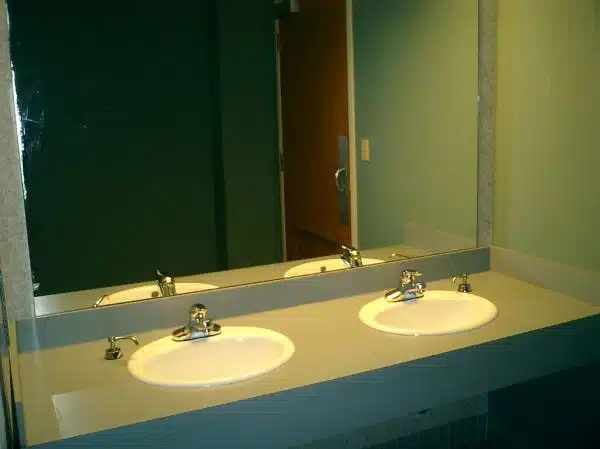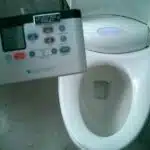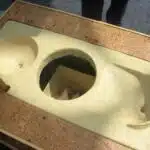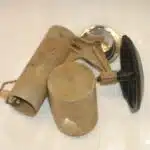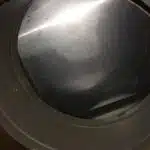Maintaining a clean and hygienic bathroom is crucial to ensure a healthy living environment. A dirty bathroom can harbor germs, bacteria, and viruses that can cause illnesses. However, cleaning the bathroom can be a daunting task for many people, especially those who are not familiar with the process. In this article, we will discuss five simple steps to help you clean your bathroom effectively and efficiently.
As a professional cleaning expert, I have seen many bathrooms that have not been cleaned properly, which can lead to unpleasant odors, mold growth, and even structural damage in some cases. Therefore, it is essential to understand the importance of regular cleaning and adopt proper techniques to keep your bathroom clean and safe. By following these five steps, you can maintain a sparkling clean bathroom that not only looks good but also promotes better hygiene for you and your family.
Gather Your Supplies
Cleaning your bathroom may seem like a daunting task, but with the right supplies and techniques, it can be a breeze. Before getting started, gather all the necessary supplies to ensure that you won’t need to interrupt your cleaning flow. Keep in mind that there are budget-friendly alternatives and eco-friendly options available for most cleaning products.
When selecting cleaning supplies, consider what type of surfaces you’ll be cleaning. For example, if you have tile floors or walls, you’ll need a grout brush to scrub away any dirt or mildew. If you have hard water stains on your shower doors or fixtures, you’ll want to invest in a good quality cleaner specifically designed for removing these types of stains. Additionally, consider using microfiber cloths as they are more effective at removing dirt and bacteria than traditional cotton cloths.
If you’re looking for budget-friendly alternatives or eco-friendly options, there are several choices available in today’s market. Vinegar is an excellent natural cleaner that can be used on many surfaces, including glass shower doors and toilet bowls. Baking soda is also a versatile cleaner that can be used to scrub grime from sinks and tubs while leaving them sparkling clean. Another option is using essential oils with water as an all-purpose cleaner; not only does this provide a natural fragrance but also has antibacterial properties.
Now that you have all the necessary supplies at hand, it’s time to put on protective gear before starting the actual cleaning process. Remember to wear gloves and goggles when handling harsh chemicals to protect your skin and eyes from any potential harm. By taking these precautions and using high-quality cleaning supplies tailored for your bathroom surfaces, you will achieve optimal results when cleaning your bathroom.
Put On Protective Gear
To ensure your safety while cleaning the bathroom, it is important to wear protective gear. This includes gloves and safety goggles to protect your hands and eyes from harsh chemicals used during the cleaning process. Choosing the right apron can also be beneficial in protecting your clothes from any splashes or spills that may occur.
When selecting gloves, it is important to choose a pair that fits comfortably and correctly. Gloves that are too loose or too tight can impede your ability to clean effectively or cause injury. Safety goggles should fit snugly around your eyes to prevent any chemical splashes from getting into them.
Additionally, wearing an apron can minimize the risk of ruining your clothes with cleaning products. Choose an apron made of a waterproof material that covers your torso and legs. It is also important to select proper footwear – closed-toe shoes with good traction will help prevent slips and falls on wet surfaces.
To ensure a safe and effective cleaning process, don’t forget to invest in protective gear such as gloves, safety goggles, the right apron, and footwear. These simple steps can go a long way in ensuring a successful cleaning experience in your bathroom. Now that you have donned your protective gear, it’s time to move on to clearing the clutter for an organized space!
Clear The Clutter
Imagine walking into a beautiful garden. The sun is shining, the flowers are in full bloom, and everything seems to be in its rightful place. Now imagine walking into a cluttered garden with overgrown weeds, wilted flowers, and random objects scattered about. Which garden would you rather spend time in? The same can be said for your bathroom – clutter can make even the most beautiful space appear uninviting.
Organizing tips can help you declutter your bathroom quickly and efficiently. Start by identifying items that are no longer needed or used regularly. Consider donating or recycling these items to free up space and reduce waste. Next, group similar items together and designate a specific area for each category.
Decluttering strategies also involve using storage solutions to keep your bathroom organized. Utilize baskets, shelves, and drawer organizers to maximize space and keep everything in its place. Make use of vertical space by installing hooks on walls or behind doors for towels and robes.
By implementing these organizing tips and decluttering strategies, you’ll not only create a more visually appealing bathroom but also streamline your cleaning process. With less clutter in your way, you’ll be able to apply cleaning solutions easily and effectively without feeling overwhelmed by the mess around you.
Apply Cleaning Solutions
After clearing the clutter, it’s time to move on to applying cleaning solutions. Choosing effective and eco-friendly solutions is key to ensuring a safe and healthy bathroom environment. There are numerous cleaning products available in the market, but not all of them are created equal. Some may contain harsh chemicals that can be harmful to you and the environment.
To make sure you are using effective and eco-friendly solutions, read product labels carefully before purchasing. Look for products that contain natural ingredients such as vinegar, baking soda, lemon juice, and essential oils. These ingredients have powerful cleaning properties that can effectively remove dirt, grime, and stains without harming your health or the environment.
Once you have chosen your cleaning products, it’s time to begin scrubbing the sink and countertops. This is a crucial step in bathroom cleaning as these areas accumulate a lot of bacteria and germs. Make sure to use a soft-bristled brush or sponge to avoid scratching delicate surfaces like marble or granite. Rinse thoroughly with water after scrubbing to remove any residue from the cleaning solution. With these steps completed, your bathroom will be clean, fresh-smelling, and ready for use!
Scrub The Sink And Countertops
While cleaning the bathroom, scrubbing the sink and countertops is an important step to ensure that they remain clean and hygienic. One common mistake people make when cleaning the sink is using abrasive cleaners that can scratch the surface. This not only damages the sink’s appearance but also makes it more prone to staining and discoloration.
To avoid such mistakes, it’s best to use DIY cleaning solutions that are gentle on surfaces yet effective in removing dirt and stains. For instance, a mix of baking soda and vinegar works wonders in cleaning sinks and countertops without causing any damage. Alternatively, you can use natural cleaners like lemon juice or essential oils like tea tree oil for a refreshing fragrance.
To make this step even more enjoyable, try incorporating some music into your cleaning routine or lighting a scented candle. Here are some additional tips to help you tackle this step with ease:
- Use a soft-bristled brush or sponge to gently scrub the surfaces.
- Rinse thoroughly with water after cleaning.
- Dry off with a clean towel or microfiber cloth.
- Avoid leaving any standing water on the surfaces.
As you finish scrubbing the sink and countertops, it’s time to move on to the next step – cleaning the toilet bowl. Remember to stay focused and avoid distractions during your cleaning routine for optimal results.
Clean The Toilet Bowl
After thoroughly scrubbing the sink and countertops, it’s time to move on to cleaning the toilet bowl. The toilet bowl is often considered one of the dirtiest areas in a bathroom due to constant use. To effectively clean the toilet bowl, it’s important to have the right types of cleaners on hand.
There are several types of cleaners that can be used to clean a toilet bowl. One popular option is a bleach-based cleaner, which effectively kills bacteria and removes stains. However, bleach-based cleaners may not be eco friendly options and can have harsh fumes that may cause irritation or harm if not properly ventilated. Alternatively, there are eco-friendly options available such as vinegar-based cleaners or natural enzyme-based cleaners.
When using any cleaner on a toilet bowl, it’s important to follow the instructions carefully and use protective gloves if necessary. It’s also recommended to let the cleaner sit for a few minutes before scrubbing with a toilet brush and flushing away the solution. By following these steps, you can effectively clean your toilet bowl while minimizing exposure to harmful chemicals.
Moving forward from cleaning the toilet bowl, it’s time to wipe down the shower and tub. This area is prone to soap scum buildup and mildew growth, so it’s important to regularly clean this area as part of your bathroom cleaning routine.
Wipe Down The Shower And Tub
When it comes to cleaning the bathroom, one of the most important tasks is wiping down the shower and tub. These areas are particularly prone to mildew buildup and soap scum, which can be unsightly and even lead to health issues if left unchecked. Fortunately, there are a few simple steps you can take to keep your shower and tub looking great.
First, it’s important to choose the right types of cleaners for your shower and tub. Look for products that are specifically designed for use in the bathroom, as these will be formulated to tackle tough soap scum and mildew stains. You may also want to consider using a squeegee or other tool to remove excess water from the walls and floor after each use, as this can help prevent buildup from forming in the first place.
Another key tip for preventing mildew buildup in the bathroom is to keep things well-ventilated. Make sure that your bathroom has plenty of airflow, either through an exhaust fan or by leaving a window open during or after showering. You may also want to invest in a dehumidifier if you live in a particularly humid climate or have had issues with mold or mildew in the past.
As you wipe down your shower and tub, take care to pay attention to any areas where grime or stains have built up over time. Use a soft-bristled brush or sponge with gentle pressure to remove these spots without damaging your tile or fixtures. With these tips in mind, you’ll be able to keep your bathroom looking fresh and clean for years to come! Now let’s move on to scrubbing those tiles and grout for an extra sparkling finish.
Scrub The Tiles And Grout
After wiping down the shower and tub, it’s time to move on to the tiles and grout. This area is notorious for collecting dirt and grime, especially if you have porous or textured tiles. But fear not, with the right techniques, you can get your bathroom looking sparkling clean in no time.
Grout cleaning techniques are essential for maintaining a fresh-looking bathroom. One method is using a mixture of baking soda and vinegar. Apply the paste to the grout lines and let it sit for about 15 minutes before scrubbing with a brush. Another option is using hydrogen peroxide and baking soda mix, which works well on tough stains. For stubborn mold or mildew, use bleach but be sure to wear gloves and ventilate the room.
When it comes to tile cleaning hacks, prevention is key. Daily maintenance like wiping down excess water after a shower can prevent buildup. Use a microfiber cloth or squeegee to ensure no water droplets remain on the tiles. For deep cleaning, avoid abrasive materials that can scratch the surface of your tiles. Instead, opt for a non-abrasive cleaner or make your own solution with equal parts of dish soap and warm water.
As you finish scrubbing away at those grout lines and tiles remember that once you’re done there’s still one more thing left on your list- cleaning the mirror and windows!
Clean The Mirror And Windows
- Start by wiping off any dirt and dust from the mirror and windows using a clean, lint-free cloth and a cleaning solution.
- Next, use a polishing cloth to buff out any streaking or smudges on the mirror and windows.
- To remove any stains, combine equal portions of white vinegar and water in a spray bottle and apply it to the affected areas.
- Allow the solution to sit for a few minutes and then scrub the surface with a nonabrasive scrub pad.
- Use a clean, lint-free cloth to wipe off the solution.
- Finally, use a microfiber cloth to buff the cleaned surface and ensure a streak-free finish.
Wipe Off Dirt
To achieve a sparkling bathroom, wiping off dirt from the mirrors and windows is essential. Effective cleaning techniques involve starting with a dry microfiber cloth to remove any excess dust or hair, ensuring that the surface is free of debris before applying any cleaning products. Choosing the right cleaning products can make all the difference in achieving a streak-free shine on your mirrors and windows.
When it comes to selecting cleaning products, it’s important to avoid using harsh chemicals that could damage the glass surface. Instead, opt for a mild glass cleaner or create your own using equal parts of water and vinegar. Spray the solution onto the mirror or window and use a clean microfiber cloth to wipe away any smudges or fingerprints.
After you have cleaned the mirror or window thoroughly, inspect for any remaining streaks or spots. Repeat the process until you achieve a spotless finish. With these effective cleaning techniques and appropriate cleaning products, wiping off dirt from mirrors and windows will be easy and leave your bathroom looking its best.
Polish
To achieve a truly spotless bathroom, cleaning the mirrors and windows is not enough. Polishing them can make all the difference in achieving a sparkling finish. The benefits of polishing include removing any remaining streaks or spots, enhancing the shine, and creating a protective film that repels water and dirt.
There are different types of polishing products available in the market. Some are specifically designed for glass surfaces, while others work well on multiple surfaces. When selecting a polishing product, it’s important to read the label carefully to ensure that it’s safe for use on your mirror or window.
To polish your mirror or window, apply a small amount of the polishing product onto a clean microfiber cloth and rub it onto the surface in circular motions until all smudges and fingerprints disappear. Once done, use another clean microfiber cloth to buff the surface until it shines. With regular cleaning and polishing, your mirrors and windows will stay looking clean and bright for longer periods.
Remove Stains
To achieve a truly spotless bathroom, cleaning the mirrors and windows is not enough. While polishing can enhance the shine of these surfaces, it may not be enough to remove stubborn stains that have been left untreated. Effective stain removal techniques are necessary to ensure that your mirrors and windows are free from blemishes, streaks, and spots.
When it comes to removing stains from glass surfaces, there are different natural stain removers to try at home. Baking soda mixed with water can be used as a paste to remove tough stains on mirrors and windows. Vinegar diluted with water can also help dissolve grime and dirt on these surfaces. Additionally, rubbing alcohol or hydrogen peroxide can be effective in removing ink or marker stains on glass.
To use these natural stain removers, simply apply the mixture onto the affected area using a clean cloth or sponge. Let it sit for a few minutes before wiping off with a damp cloth. For tougher stains, repeat the process until all traces of the stain have disappeared. Remember to rinse off any residue thoroughly with water before polishing your mirror or window.
By incorporating effective stain removal techniques in your cleaning routine and trying out natural stain removers at home, you’ll be able to achieve sparkling clean mirrors and windows that look as good as new.
Dust And Vacuum The Floor
To effectively clean your bathroom floor, it is essential to start with dusting. This will help to reduce the amount of dirt and debris that can be further spread around during vacuuming. Use a microfiber cloth or duster to gently wipe down all surfaces, including baseboards and corners where dust tends to accumulate. Take care not to stir up too much dust as you clean.
Once you have thoroughly dusted the floor, it’s time to break out the vacuum cleaner. Be sure to use the appropriate attachment for hard floors, as using a carpet attachment can scratch and damage surfaces. Move furniture and any other items off of the floor before starting to vacuum, so you don’t miss any areas. Vacuum slowly and methodically, going over each area multiple times if needed.
Reducing dust buildup in your bathroom is key to keeping it clean longer. One way to do this is by regularly replacing air filters in your HVAC system and using an air purifier in your home. Additionally, using a doormat outside of your bathroom entrance can help trap dirt and allergens before they enter the room. Finally, consider adding plants that naturally purify the air in your bathroom for an added bonus!
Disinfect High-Touch Surfaces
- Wearing protective gloves is an important step to take when disinfecting high-touch surfaces.
- The cleaner used should be appropriate for the type of surface being disinfected and should be applied according to the manufacturer’s instructions.
- A clean cloth should be used to apply the cleaner and to gently scrub the surface.
- Countertops, sink, and toilet should be wiped down with a disinfectant cleaner.
- Door knobs, faucets, light switches, mirrors, and other hard surfaces should be wiped down with a disinfectant cleaner.
- Floors, shower, tub, trash can, and towels should be washed with a disinfectant cleaner according to manufacturer’s instructions.
Gloves
When it comes to disinfecting high-touch surfaces in your bathroom, wearing gloves is an essential step. Disposable gloves offer convenience and reduce the risk of cross-contamination between surfaces. On the other hand, reusable gloves are eco-friendly and cost-effective in the long run. However, whichever type of glove you choose, make sure to use them consistently while cleaning your bathroom.
Another factor to consider when selecting gloves for cleaning is their material composition. Latex gloves are a popular choice due to their affordability and flexibility. However, they may not be suitable for individuals with latex allergies. In this case, nitrile gloves are a viable alternative as they provide similar protection without triggering allergic reactions.
It’s crucial to remember that wearing gloves alone does not guarantee complete protection from harmful bacteria and viruses. Proper hand hygiene should still be observed before and after using gloves. Additionally, avoid touching your face or other objects while wearing gloves as this can transfer contaminants from one surface to another. By incorporating these tips into your cleaning routine, you can maintain a safe and hygienic bathroom environment for yourself and others.
Cleaner
When it comes to disinfecting high-touch surfaces in your bathroom, using an effective cleaner is just as important as wearing gloves. While there are various types of cleaners available, using one with natural ingredients offers several benefits. Natural cleaners are eco-friendly and safe for use around children and pets. They also effectively eliminate harmful bacteria and viruses without leaving behind harsh chemical residues that can trigger respiratory problems or allergies.
Choosing the best cleaner for your bathroom can be overwhelming since there are many options available in the market. One way to determine the most suitable cleaner is to consider the specific needs of your bathroom. For example, if you have mildew or mold buildup, look for a cleaner with ingredients like vinegar or hydrogen peroxide. On the other hand, if you want to remove tough soap scum or hard water stains, a cleaner with citric acid or baking soda may be more effective.
Apart from considering the specific needs of your bathroom, it’s also essential to read labels carefully when choosing a cleaner. Look for products that clearly state their ingredients and avoid cleaners with toxic chemicals like phthalates or ammonia. Additionally, choose products that have been certified by reputable organizations like Green Seal or EPA Safer Choice Program to ensure their safety and effectiveness. By following these tips, you can select a cleaner that not only disinfects high-touch surfaces but also promotes a safe and healthy environment in your bathroom.
Cloth
When it comes to disinfecting high-touch surfaces in your bathroom, choosing the right cleaning tool is just as crucial as selecting the proper cleaner. Using a cloth that is effective in trapping and removing bacteria and viruses is essential in preventing the spread of infectious diseases. Microfiber cloths are a popular choice among cleaning professionals due to their numerous benefits. These cloths have tiny fibers that can trap and remove dirt, grime, and germs from surfaces without the need for harsh chemicals. They are also reusable, making them an eco-friendly alternative to disposable wipes.
If you prefer natural alternatives to cleaning with cloth, there are several options available. One popular option is using bamboo fiber towels or cotton cloths. These materials are biodegradable and can be washed and reused multiple times before needing replacement. Another option is using steam cleaners that use hot water vapor to kill germs and bacteria on surfaces. This method does not require any chemicals, making it an eco-friendly way of disinfecting high-touch surfaces.
In conclusion, using an effective cleaning tool like microfiber cloths or natural alternatives like bamboo fiber towels or steam cleaners can help disinfect high-touch surfaces in your bathroom without harming the environment or exposing you to toxic chemicals. By incorporating these tools into your cleaning routine, you can maintain a safe and healthy environment for yourself and your loved ones while serving as a responsible member of society.
Tackle The Tough Stains
Disinfecting high-touch surfaces is an essential step in maintaining a clean and healthy bathroom. According to a study conducted by the National Sanitation Foundation (NSF), the toilet seat is not the most germ-ridden surface in our bathrooms. In fact, faucets, handles, and doorknobs are more likely to harbor dangerous bacteria such as E.coli, salmonella, and MRSA.
To tackle tough stains in your bathroom, it’s important to identify the type of stain you’re dealing with first. For instance, mold and mildew can be removed using natural remedies like vinegar or baking soda. However, if you’re dealing with rust stains on your toilet bowl or hard water buildup on your shower tiles, you may need to use professional cleaners that contain harsh chemicals like hydrochloric acid.
When cleaning tough stains in your bathroom, it’s crucial to take proper safety precautions. Here are some tips for handling harsh chemicals safely:
- Wear protective gloves and eyewear
- Work in a well-ventilated area
- Do not mix different cleaning products together
- Follow the instructions on the label carefully
Using these methods will help ensure that your bathroom remains clean and free from harmful bacteria and stubborn stains. Now let’s move on to the next step: eliminating odors.
Eliminate Odors
Regularly washing towels and other fabric items in hot water and detergent can help reduce odors in the bathroom.
Air circulation can help reduce bathroom odors, so airing out the room by opening windows is recommended.
Natural deodorizers, such as baking soda and vinegar, can help reduce odors when used in combination with other cleaning techniques.
Bathroom drains should be regularly cleaned of hair and other debris to reduce odors and improve drainage.
Wash Towels
Ensuring that your bathroom is clean and free of unpleasant odors requires more than just wiping down surfaces and scrubbing the toilet bowl. A frequently overlooked aspect of maintaining a fresh and hygienic bathroom is proper towel care. In this section, we will discuss how to properly wash towels and provide tips for maintaining their freshness.
To begin, it is essential to understand how to properly wash towels. A common mistake people make when washing towels is using too much detergent or fabric softener. This can contribute to the buildup of bacteria, mold, and mildew over time, leading to an unpleasant odor. Instead, use a small amount of detergent and avoid fabric softeners altogether. Additionally, it’s recommended that you wash towels in hot water with a cup of white vinegar added to the rinse cycle to kill any lingering bacteria.
In addition to proper washing techniques, there are several tips for maintaining towel freshness between washes. First, hang wet towels up immediately after use rather than leaving them in a heap on the floor or in a hamper. This helps prevent the growth of bacteria and mold. Additionally, consider switching out your towels every few days rather than waiting until they become visibly dirty or smelly. By following these simple guidelines for towel care, you can eliminate one potential source of bathroom odors and ensure that your space remains clean and fresh-smelling.
Air Out Room
To effectively eliminate unpleasant odors in your bathroom, it’s important to take a proactive approach. One simple yet effective method is to air out the room regularly. By opening windows and allowing fresh air to circulate, you can help remove moisture and prevent the growth of bacteria and mold that can contribute to musty smells. Additionally, using a dehumidifier can help reduce humidity levels in the bathroom, further reducing the chances of odors developing.
When airing out your bathroom, it’s important to do so consistently. Aim to open windows for at least 10-15 minutes every day, or longer if possible. This will help promote airflow and allow any lingering odors to dissipate. If your bathroom doesn’t have windows or if you live in an area with high humidity levels, consider using a dehumidifier to control moisture levels. Be sure to follow manufacturer instructions for optimal use.
In addition to promoting good air flow and controlling humidity levels, there are several other strategies you can use to keep your bathroom smelling fresh. These include regularly cleaning surfaces such as countertops, floors, and toilets; taking out the trash frequently; and using air fresheners or essential oils as desired. By combining these methods with regular airing out of your bathroom, you can effectively eliminate unpleasant odors and create a clean and inviting space.
Maintain Your Clean Bathroom
Maintaining a clean bathroom takes effort, but it is worth it to keep your space hygienic and welcoming. Here are some tips for daily maintenance that can help you avoid having to do major cleaning sessions as often:
Wipe down surfaces regularly: After each use, wipe down the sink, toilet seat, and shower walls with a towel or sponge. This will prevent water stains and soap scum buildup.
Keep moisture under control: Mold thrives in damp environments, so make sure to turn on the fan or open a window when showering or bathing. Also, avoid leaving wet towels or clothes on the floor or hanging in the bathroom for too long.
Empty trash cans regularly: Bathroom trash cans can quickly fill up with used tissues, empty bottles, and other debris. To prevent odors and bacteria growth, empty them at least once a week.
Preventing mold growth is crucial for maintaining a clean bathroom. Aside from controlling moisture levels as mentioned above, you can also take these additional steps:
Use a squeegee after showering: This tool can remove excess water from shower walls and doors to prevent mold growth.
Invest in an exhaust fan: A properly functioning exhaust fan can help reduce humidity levels in your bathroom.
Clean grout regularly: Grout lines between tiles are notorious for mold growth. Use a bleach solution (1 part bleach to 10 parts water) to scrub grout lines once every few months.
Remember that while daily maintenance tasks can go a long way in keeping your bathroom clean, sometimes professional help may be needed for deep cleaning or mold removal services. Don’t hesitate to seek out reputable professionals if you need extra assistance keeping your space fresh and hygienic.
Seek Professional Help If Needed
Maintain Your Clean Bathroom with Ease
As a cleaning expert, I understand that keeping your bathroom clean is no easy task. But the rewards are worth it- a clean and hygienic bathroom can uplift your mood, enhance the aesthetic appeal of your home, and reduce the likelihood of infections. In the previous section, we went through five steps to clean your bathroom effectively. Now, let’s delve into considerations for hiring professionals versus DIY cleaning.
One option is to consider hiring professional cleaners for regular deep cleaning or one-off jobs. They have specialized equipment and knowledge to tackle stubborn stains, mold buildup, and other hard-to-clean areas effectively. Additionally, their services are efficient and timely, saving you time and energy that you can use elsewhere. However, it is important to note that hiring professionals can be expensive in the long run, especially if you need frequent cleaning services.
On the other hand, DIY cleaning can be cost-effective as you only need basic cleaning supplies such as vinegar, baking soda, and soap. You also have control over the products used in your home and can customize them according to your preferences or allergies. However, DIY cleaning requires time and effort on your part- from researching effective cleaning methods to physically scrubbing every inch of your bathroom. It may also not yield the same results as professional services if you lack experience or knowledge in cleaning techniques.
Ultimately, whether you decide to hire professionals or do it yourself depends on various factors such as budget constraints, availability of time and energy, level of cleanliness desired or necessary due to health concerns like allergies or asthma etcetera. Whatever decision you make will require careful consideration so that your bathroom remains clean while respecting any constraints that may exist in terms of money or resources available for this task at hand.
Conclusion
Maintaining a clean bathroom can be as easy as following these five steps. First, gather your cleaning supplies and put on protective gear to ensure safety. Next, clear the clutter and apply cleaning solutions to surfaces in need of attention. Scrub the sink and countertops, tackling tough stains with determination. Eliminate any lingering odors to fully refresh your space.
To maintain a consistently clean bathroom, it’s important to stay on top of regular cleaning tasks and address any issues promptly. Seek professional help if needed for deep cleaning or repairs that require expert attention. Remember, a sparkling bathroom is not only visually appealing but also beneficial for overall hygiene and health.
As a professional cleaning expert, I urge you to take pride in your clean bathroom as it reflects your commitment to cleanliness and good health practices. Make it a habit to regularly perform these simple steps for an inviting and refreshing bathroom experience every time.
Image Credits
- “bathroom” by dhlynsky (featured)

